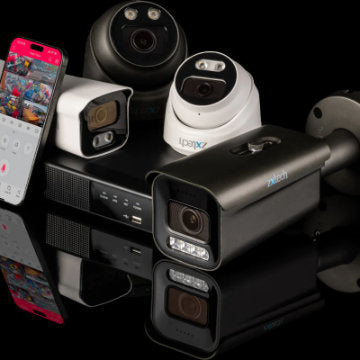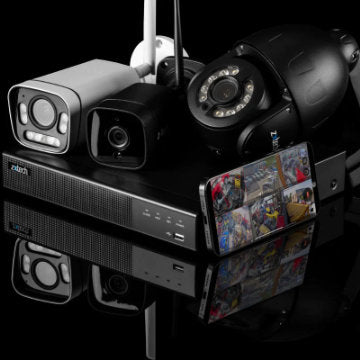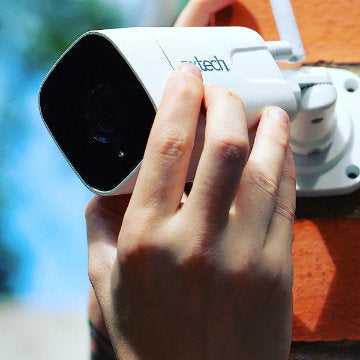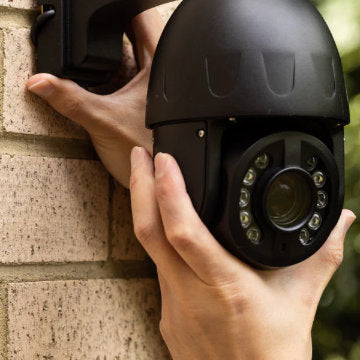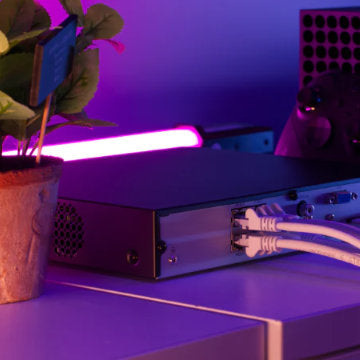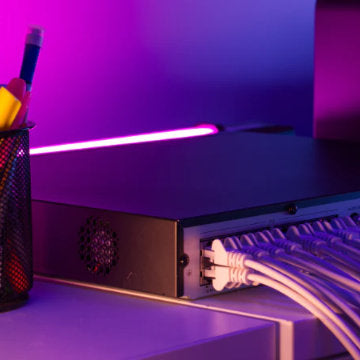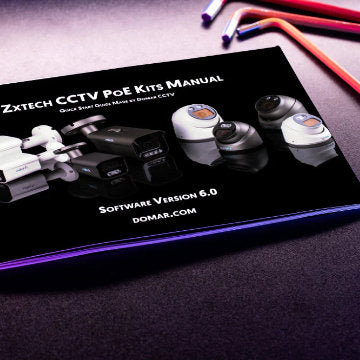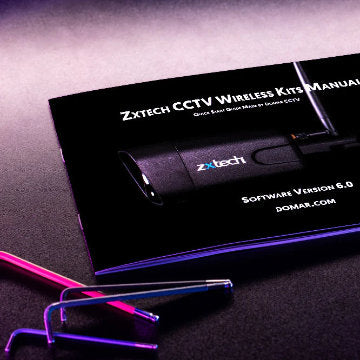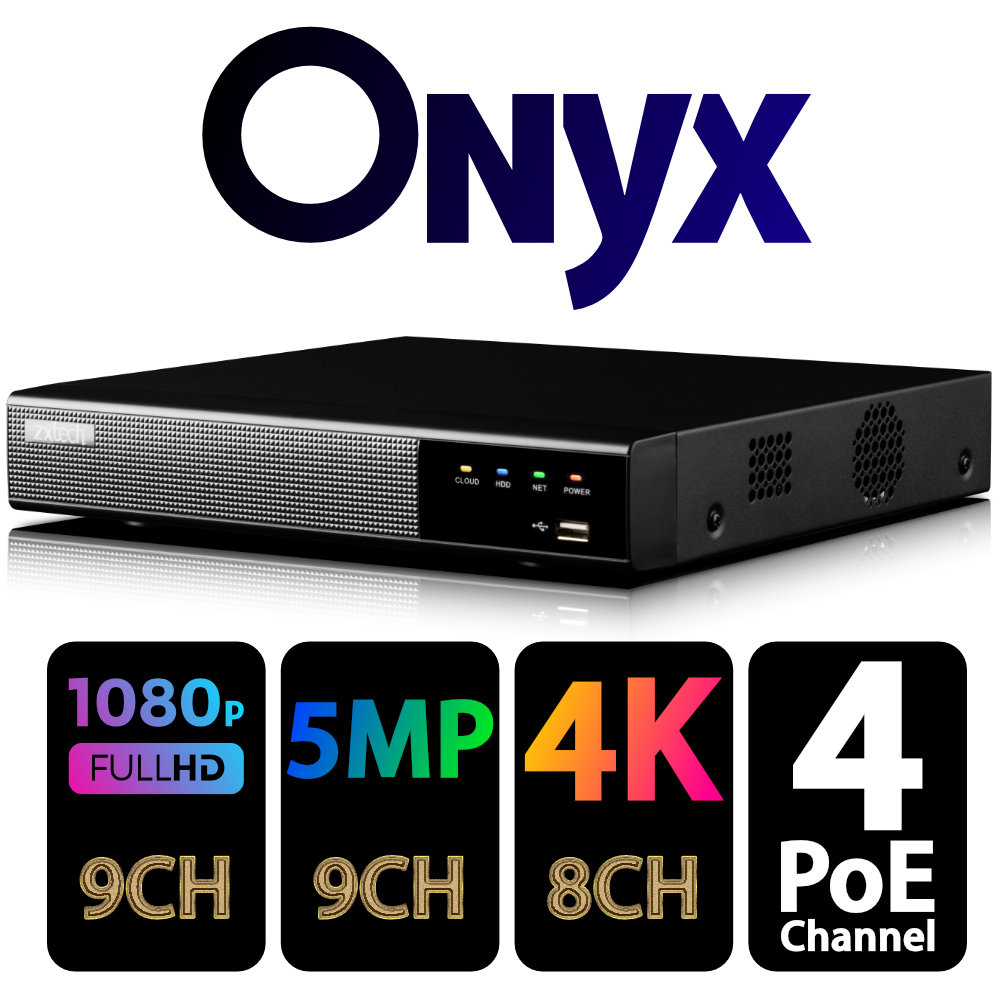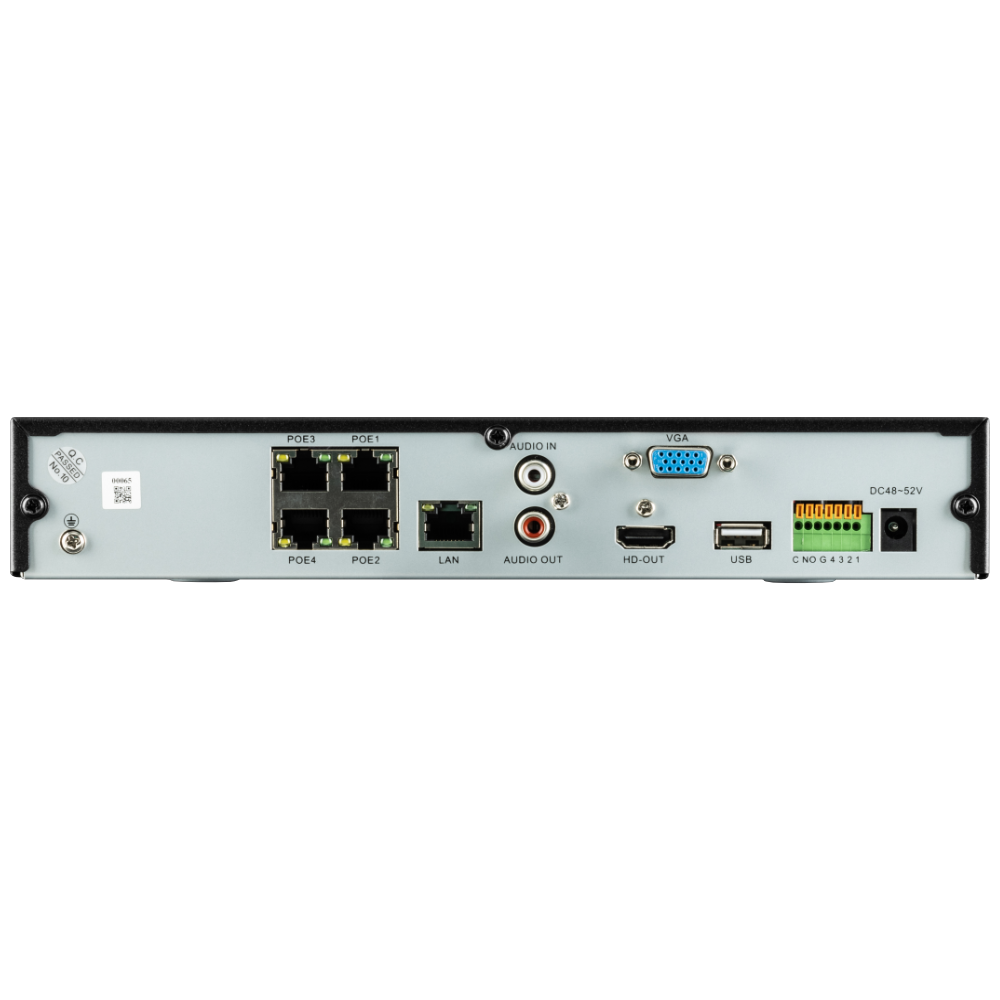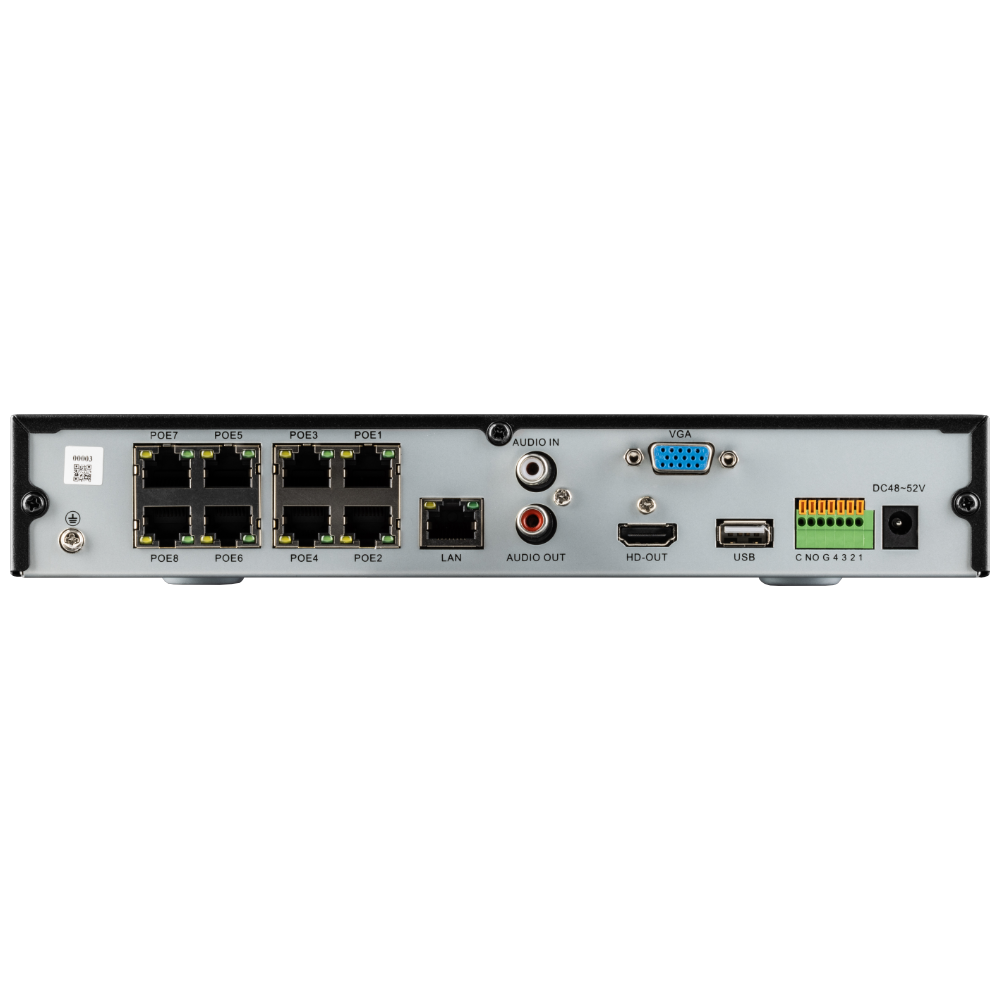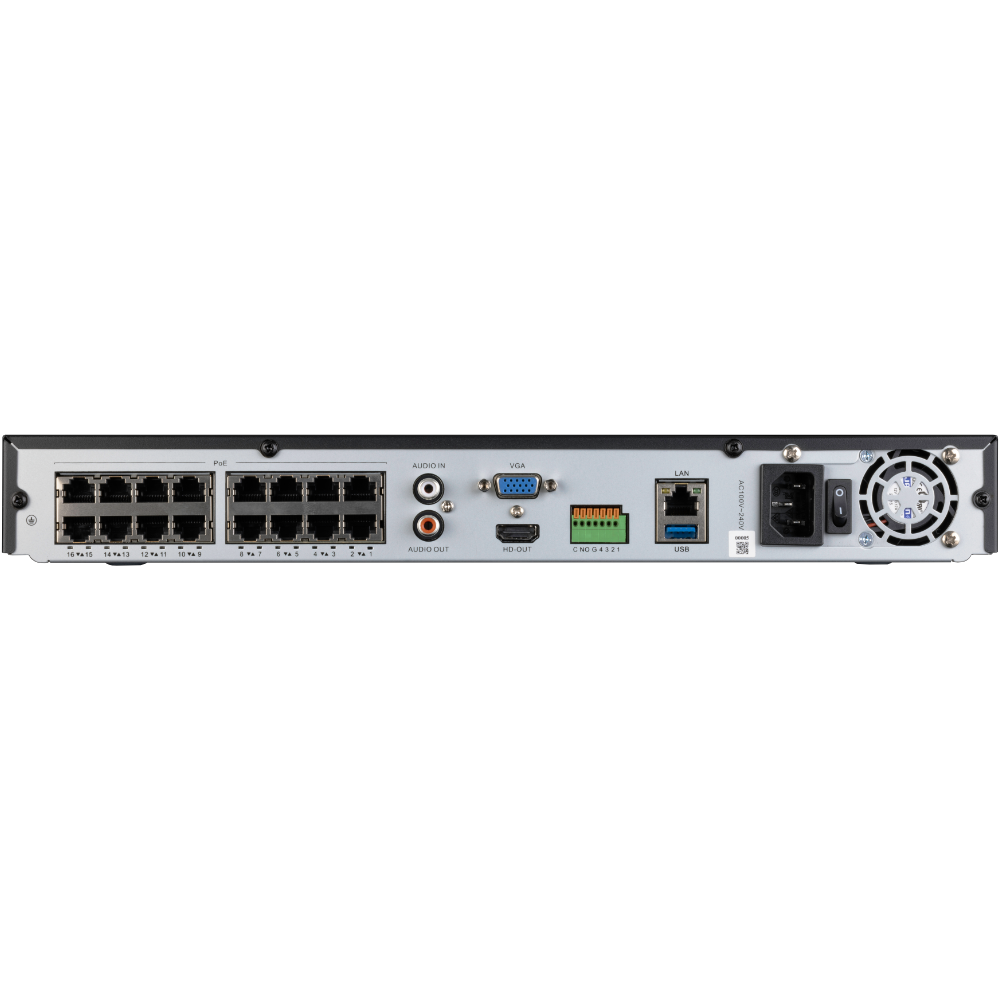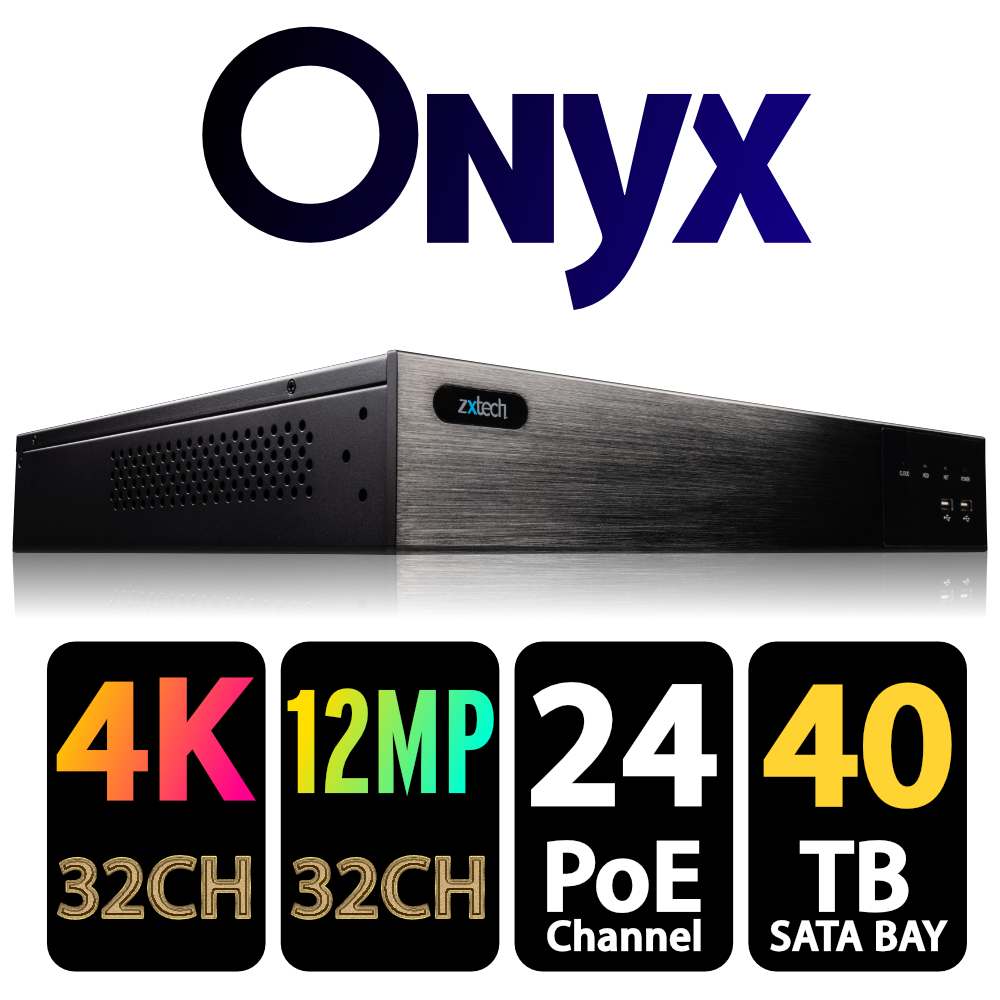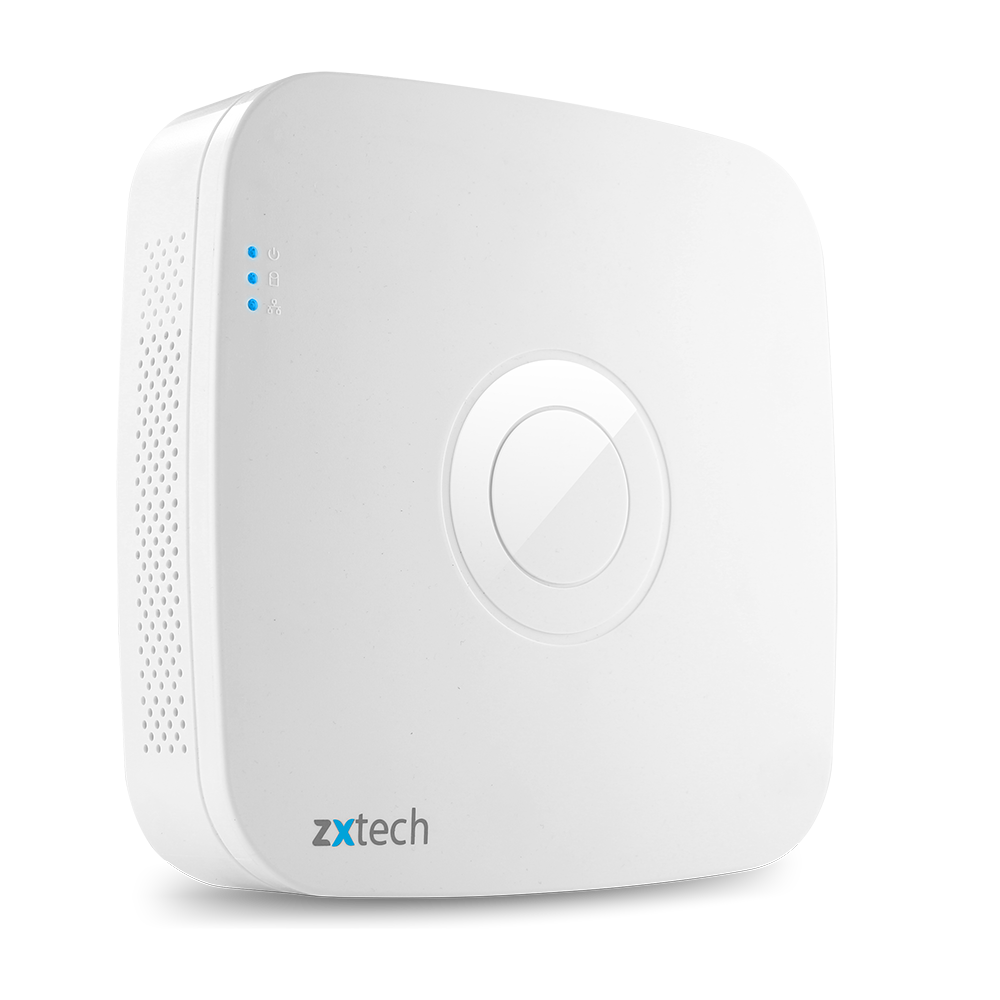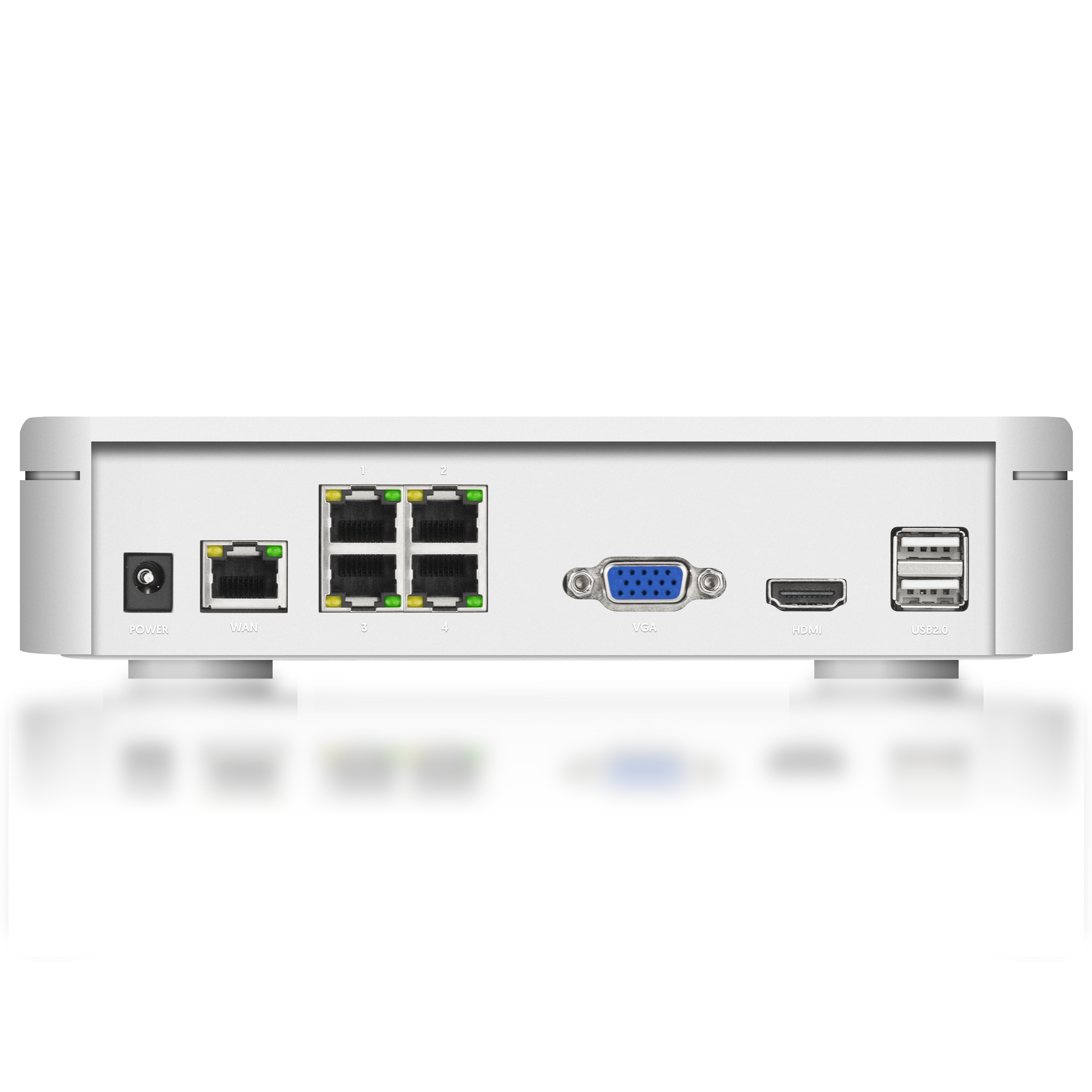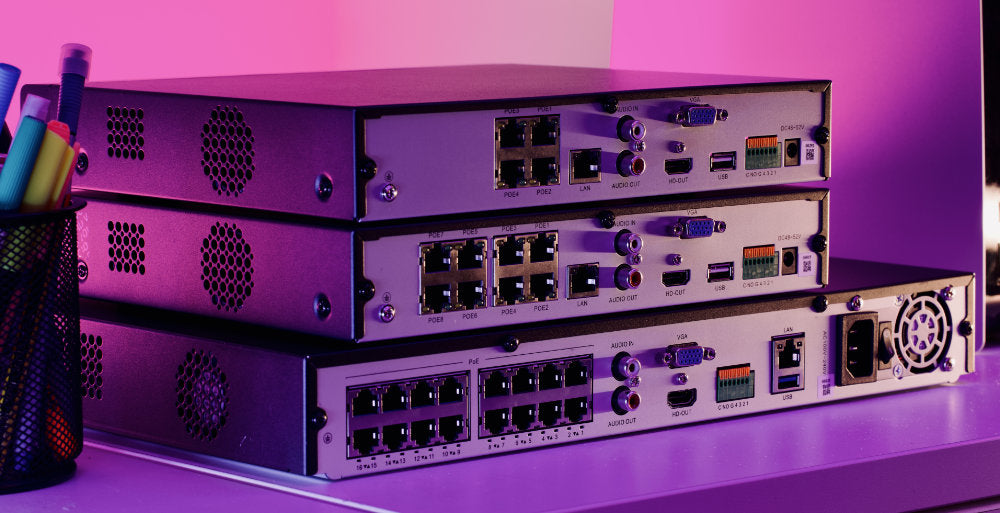
Filters
7 products
CCTV NVR Network Video Recorders
What is a CCTV Network Video Recorder?
A network video recorder (NVR) system is a computer system with software that can record video footage in various formats, without the need for a separate recorder. Footage coming directly from an NVR system can be exported onto a computer or separate storage option, such as a USB. Different NVR systems offer varying numbers of channels, but the average range is between 4 and 36 channels.
NVR systems are capable of recording video and audio, and exporting directly on the network they run off of. There is no need to transmit the data to a recorder to be processed, it all happens through the cameras themselves. Recording happens in real-time, and the NVR also offers key features such as masking, motion detection, alarm and other various features.
The CCTV NVR system uses H.265 compression technology, reducing the file size of recorded video and audio data. H.265 is the latest development in high-efficiency video coding (HEVC) and outperforms other current security cameras on the market. The higher levels of compression require less storage space, while still providing greater amounts of playback footage. NVR systems also provide higher bandwidth opportunities, allowing users to stream recorded data far more smoothly.
Explore Full IP CCTV Systems that comes with NVRs.
Types of NVR System
There are two main types of NVR systems available - PoE, and non-PoE. “PoE” stands for Power over Ethernet, and refers to the fact that information can be transmitted through the same cable as power (both use the Ethernet data cable), reducing the number of cables needed for the system. This creates a system that helps to minimize the space that it takes up. This system also tends to have lower installation and long-term maintenance costs compared to a non-PoE system.
Alternatively, a non-PoE simply refers to a system that is not capable of transmitting power and data through the same cable. The system requires separate cables, which makes it bulkier, and may increase the risk of maintenance and repair issues. Despite this, it has no effect on the actual quality of the data that is received.
Benefits of an NVR System
There are many different forms of CCTV security systems on the market, each with their own pros and cons. NVR systems are just one type available, and they offer users certain opportunities that are not afforded by other options.
- An NVR system is capable of recording video and audio for extra security, while most other technology options can only record video. Each NVR camera also has numerous lenses, providing a greater level of protection and greater visual recording.
- The quality of the images that are captured on NVR systems is far more superior to alternative options. NVR systems use IP cameras which create far better images compared to analogue cameras. IP cameras have a resolution range of 2MP to 12MP, in many cases outperforming DVR alternatives.
- IP cameras also contain a chipset that enables them to simultaneously record and process video and audio data. These cameras tend to be stronger and more long-lasting compared to alternatives, resulting in extended lifespans. This improved quality can be used to distinguish facial details or number plates, and will only continue to improve as technology develops.
- NVR systems are designed to be used wirelessly (although they are also capable of being connected). Many other systems cannot provide this versatility. The wireless opportunities mean that NVR systems can be placed anywhere. As long as you have access to the network, you are not constrained by coax cables like DVR systems, which have a maximum distance of 300 feet.
- PoE IP CCTV systems can transmit video and power together, reducing the amount of cables needed to connect the system. Generally, audio must be transmitted separately because the microphone is separate from the camera’s visual feed, although some cameras do have built-in microphones and speakers.
- It’s possible to add more cameras to an NVR system. Some cameras can connect to the system wirelessly, helping to strengthen the security of the building. PoE systems will also have ports for other cameras to be physically plugged into, adding them to the system that way (non-PoE systems do not have this function).
How to set up an NVR System
The process of setting up an NVR system is different from other forms of CCTV networks, but not necessarily any more difficult or time-consuming. It will differ slightly depending on whether you have a PoE model or a non-PoE model, but the process is generally the same. In regards to the hardware for a PoE system, connect the NVR to a router, using an ethernet cable. The ethernet port can be found on the back of the NVR, next to the HDMI and PoE ports. Connect the NVR to a television or monitor via an HDMI cable. The software will come with detailed instructions for setup, and how to access recordings remotely via mobile devices.
Setting up a non-PoE NVR system will occur in much the same fashion, except you will require a second cable for the power source. This can be found on the back of the NVR. The camera (or cameras) must be connected to the system using a PoE switch, or a secondary router port. The camera must be on the same network as the NVR in order to be recognized by the system and connect to it. The software will provide all of the necessary specific instructions on how to set up and remotely access the system.
Zxtech NVR systems also have a “Plug and Play” feature, that allows you to begin using it immediately, without the need to reconfigure it. This is just as convenient and easy to use as a coaxial cable system.
Looking for a CCTV NVR system?
After analysing some of the most reputable CCTV NVR systems on the market, we are confident that we are offering guests the best possible range of systems available. The Zxtech NVR systems have proven to be superior to alternatives in terms of the quality of the recordings they create, requiring less storage space and greater compression.
Zxtech PoE NVR
Zxtech continues to lead the CCTV industry by introducing new generation PoE NVRs with an affordable cost. Advanced and powerful software gives you options such as P2P remote viewing, Onvif compatibility. You will be able to connect up to 16 PoE IP Cameras at the same time, save you wiring up all the DC cables.
Next Business Day Delivery
Place orders before 3pm for next business day delivery. Free shipping for all kits.
Customer service
Reach out Mon-Fri, 9am-5pm. Response within 24 working hours.
Refer a friend
Earn rewards when your friends make a purchase.
VAT Invoices
We always include your VAT invoices in your delivery.
Discover everyday privacy protections.
Privacy is Our Priority.
Privacy is a fundamental human right. At Domar CCTV, it is also one of our core values. Your devices are important to your safety. We sell our products to protect your privacy and give you control over your information. It's not always easy, but those are the principles we believe in.

Face Detection Data
Our cameras come with smart face detection features. Face detection data exist only on your device and can be deleted at any time. It does not go anywhere else. Face detection features can be turned off at any time.

Video Footage
Your security footage is protected by your password and cannot be accessed without it. Once you have changed the default password of the device, only manufacturer can reset it, after confirmation of purchase and identity.

Audio Data
Audio recording can be turned on and off if the camera is equipped with a microphone. It cannot be accessed without your password.

App Access
One device can link up with a single mobile app account. However, you may share it with another account and cease sharing at any time.

